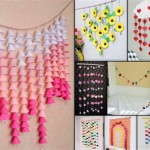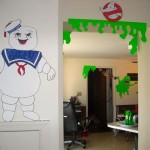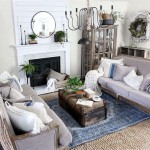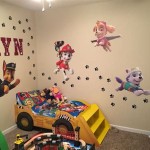Decorating a Toddler Room on a Budget
Transitioning a child's nursery into a toddler room marks a significant milestone. However, this transition can often be perceived as a costly endeavor. Decorating a toddler room on a budget requires careful planning, creative resourcefulness, and a focus on functionality and safety. The objective is to create a stimulating and comfortable environment that fosters development without straining financial resources.
The initial step involves assessing the existing space and identifying items that can be repurposed or adapted. This minimizes unnecessary purchases and maximizes the utility of already owned furniture and accessories. A thorough inventory of current possessions, including furniture, bedding, and decorative elements, provides a clear understanding of what needs to be replaced or updated.
Prioritization plays a critical role in budget-conscious decorating. Identifying essential items, such as a toddler bed and adequate storage solutions, allows for a strategic allocation of resources. Non-essential decorative items can be addressed later, allowing for a more gradual and financially manageable transformation.
Repurposing Existing Furniture
One of the most effective cost-saving strategies is repurposing existing furniture. A crib, for example, can often be converted into a toddler bed, eliminating the need for a new purchase. Many convertible cribs are designed to transition seamlessly into toddler beds by removing one side railing, providing a safe and familiar sleeping environment for the child.
Changing tables can also be adapted for alternative uses. After diaper changes are no longer necessary, the changing table can be repurposed as a storage unit for toys, books, or art supplies. Adding decorative baskets or bins can enhance its functionality and aesthetic appeal. Similarly, a rocking chair from the nursery can remain in the toddler room to provide a comfortable spot for reading and relaxation.
By creatively repurposing existing furniture, significant savings can be achieved while maintaining a cohesive and familiar design aesthetic. This approach also minimizes waste and promotes sustainability, aligning with environmentally conscious decorating practices.
Smart Shopping and DIY Projects
Finding affordable décor often involves exploring various shopping options. Thrift stores, consignment shops, and online marketplaces can be valuable sources for gently used furniture, accessories, and decorative items at significantly reduced prices. These avenues provide access to unique and vintage pieces that can add character and individuality to the toddler's room without exceeding the budget.
Garage sales and flea markets are also excellent places to discover hidden gems and negotiate prices. Patience and persistence are key when searching for specific items, as the selection can vary greatly. Regularly checking these sources can lead to unexpected finds that perfectly complement the room's design.
DIY projects offer another avenue for cost-effective decorating. Creating handmade artwork, sewing custom curtains, or building simple storage solutions can add a personal touch to the room while saving money. Online tutorials and instructional videos provide guidance for various DIY projects, making them accessible to individuals with varying skill levels.
Painting furniture can dramatically alter its appearance and give it a fresh, new look. Applying a coat of colorful paint to an old dresser or bookshelf can transform it into a vibrant and eye-catching piece of furniture. Stencils can also be used to add decorative patterns or designs, further enhancing its visual appeal.
Fabric remnants can be used to create custom cushions, curtains, or wall hangings. These small-scale projects are relatively inexpensive and allow for creative expression and personalization. Using fabric scraps to create patchwork quilts or decorative pillows can add warmth and texture to the room.
Prioritizing Functionality and Safety
When decorating a toddler room, functionality and safety should be paramount. Furniture should be sturdy and stable, with rounded edges to prevent injuries. Securing tall furniture to the wall with anti-tip brackets is essential to prevent it from tipping over and causing harm.
Flooring should be soft and forgiving, especially in play areas. Area rugs can provide cushioning and add warmth to hard floors. Non-slip backing is crucial to prevent rugs from sliding and causing falls.
Window coverings should be free of cords or loops that could pose a strangulation hazard. Cordless blinds, shades, or curtains are the safest options. If cords are present, they should be kept out of reach of children.
Storage solutions should be accessible and age-appropriate. Low shelves or bins allow toddlers to easily access their toys and belongings, promoting independence and organization. Toy chests should have lightweight lids with safety hinges to prevent them from slamming shut and injuring fingers.
Creating a designated play area with soft mats or rugs can provide a safe and comfortable space for toddlers to engage in active play. Ensuring that the play area is free of sharp objects or potential hazards is essential for injury prevention.
Lighting should be adequate and adjustable. A combination of ambient and task lighting can create a warm and inviting atmosphere. A nightlight can provide comfort and reassurance during the night, helping toddlers feel secure and safe.
Wall décor should be securely mounted and free of small parts that could be a choking hazard. Framed artwork or fabric wall hangings can add visual interest to the room without posing a safety risk. Avoid using glass-covered frames or decorative items with sharp edges.
Electrical outlets should be covered with safety plugs to prevent children from inserting objects into them. Loose electrical cords should be tucked away or secured to prevent tripping hazards.
Maintaining a clean and uncluttered environment is also crucial for safety. Regularly cleaning and disinfecting surfaces can help prevent the spread of germs and bacteria. Keeping the floor clear of toys and other obstacles can reduce the risk of falls.
Decorating a toddler room on a budget does not necessitate sacrificing style or quality. By employing creative strategies, prioritizing functionality, and focusing on safety, it is possible to create a stimulating and comfortable environment that supports development without exceeding financial limitations. Careful planning and resourceful execution are key to achieving a toddler-friendly space that is both aesthetically pleasing and financially responsible.

10 Tips For Creating A Stylish Kid S Room On Budget The Seattle Times

Affordable Kids Room Decorating Ideas

Top 5 Decorating Tips For Kids Room On A Budget Memories Of Growing Up

7 Beautiful Kids Room Decor Ideas To Make Your Little Ones Happy

15 Easy Toddler Girl Bedroom Ideas On A Budget Joyful Derivatives

Top 5 Decorating Tips For Kids Room On A Budget Memories Of Growing Up

How To Decorate Your Kids Bedrooms For On A Budget Practical Perfection

Toddler Girl Bedroom Ideas On A Budget Clipper City House

Bedroom Ideas For A Cute Toddler Girl Room On Budget 2025 Trends Purple Girls Boys

25 Toddler Girl Bedroom Ideas On A Budget Little Decor Founterior







